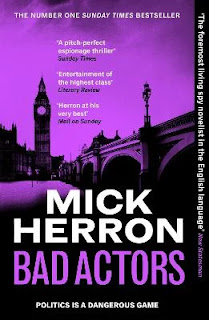EDITORIAL
Mike Williams tells us about film magazines and the loss of one of them, Total Film. "Magazines need a lot to go their way to survive".
OPENING SCENES
Guy Lodge describes how the Best International Feature at the Oscars is limited to one per country. (It used to be called Best Foreign Language Film). India has a controversial history , none more so than this year when All We Imagine As Light was dumped in favour of a comedy Laapataa Ladies. All because it was a European film taking place in India. There was an interesting section about six big movies that were not chosen by their country, including Anatomy of a Fall, Ran, Talk to Her and Three Colours Red. All these are great.
There was little interest in EDITOR'S CHOICE, IN PRODUCTION, NEWS, IN CONVERSATION, MUSINGS (David Lynch on music), MEAN SHEETS, and READER'S LETTERS.
THE LONG TAKE
The four regular articles in the Talkies section are always interesting. With the death of Maggie Smith, Pamela Hutchinson looks at her career in film. From winning the best actress Oscar for The Prime of Miss Jean Brodie and much later a best supporting actress win for California Suite. Some of her other films include The Lonely Passion of Judith Hearne (1987).
FLICK LIT
Nicole Flattery calls The Substance "tedious, over explanatory body-horror". She was far less impressed than I was.
TV EYE
Andrew Male talks about Alan Plater's three part adaptation of Chris Mullins' 1982 novel A Very British Coup. He asks "what would happen if a Marxist working class Labour leader came to power after a decade of corrupt Tory rule". Ray MacAnally plays the left wing PM.
THE MAGNIFICENT '74
Jessica Kiang recommends Gena Rowland's performance (dazzling and dangerous) in A Woman Under the Influence. "It's a film so singular, so cataclysmic and transcendent etc". "The riskiest screen performance of all time". "It disturbs still". Gena was nominated for best actress at the Oscars and won the Golden Globe. Directed by her husband John Cassavetes, it also starred Peter Falk.
ALL WE IMAGINE AS LIGHT
Six pages on the new film by Payal Kapadia (also on the front cover). It won the Grand Prix at Cannes this year. A portrait of Mumbia with three generations of women and the complications of arranged marriages. The first time an Indian film maker made it to Cannes in thirty years.
CONCLAVE
Another six pages, this time on the adaptation of the Robert Harris 2016 novel. A pope has died and Cardinal Thomas Laurence (Ralph Fiennes) has the unenviable task of organising his replacement. I didn't read any more as I want to see it in a couple of weeks. Looking forward to it.
BIRD
A long article on Andrea Arnold's new film "blending social and magic realism". Not sure.
DECONSTRUCTING BARRY
Barry Keoghan talks about his role in Bird. See my reviews of The Banshees of Inisherin and Saltburn.
SING THE CHANGES
The director of the musical drama Emilia Perez Jacques Audiard explains this trans "heavy metal-meets-hiphop-inflected musical". Am I too old for this? No nationwide release so would have to wait for maybe The Rex.
FILM REVIEWS
These include All We Imagine As Light (see above), Christmas Eve at Miller's Point (Long Island stories), Heretic (I gave Hugh Grant's horror a miss even though it has The Hollies' best song), The Piano Lesson (no general release), Conclave (see above), In Her Place (1950's Chile looks interesting), Joy (only a short review but any Jack Thorne screenplay might be worth a lookout, especially starring Thomasin McKenzie, Bill Nighy and James Norton.) Steve McQueen's Blitz is all over the cinemas but Bird isn't.
DVD'S ETC
I may have seen a long tome ago The Oblong Box (1969 with Vincent Price. David Lynch's 1997 Lost Highway is the first in this trilogy.
Nothing in LOST AND FOUND, WIDER SCREEN or BOOKS.
FROM THE ARCHIVE
An interview from 2016 with one of my favourite actresses Isabelle Huppert. "Acting should always be less than more". She hates rehearsals, spontaneity being the key. Not sure about that seeing her in yesterdays The Crime is Mine at The Rex. She appeared on the cover of Sight and Sound Magazine in September 2016. But I have seen many of her movies and am looking out for more.
Nothing interesting in THIS MONTH IN .... 1953.
ENDINGS looks at 1924's The Last Laugh. About a doorman at a grand city hotel.















































